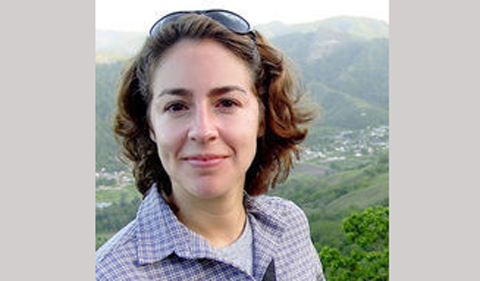The Geological Sciences Colloquium Series presents Dr. Maria Perez discussing “How Caves Gather: An Ode to Speleology” on Nov. 6 from 12:55 to 1:50 p.m.
- Join Microsoft Teams Meeting
- +1 614-706-6572 United States, Columbus (Toll) Conference ID: 543 961 014#
Perez is an assistant professor in the geography program at West Virginia University’s Department of Geology and Geography. A cultural anthropologist by training, she studies the cultural and historical context of scientific practice.
“This means that I approach science as a cultural activity,” Perez said. “Speleology (cave science and exploration) serves as a case study with which I examine a range of topics such as identity (Who are we? What brings us together?), place and emotion (How do places become meaningful?), and value (How do we come to value, beyond economic considerations, places that are hidden or not part of our everyday livelihoods?). Really, these questions are relevant well beyond caves, karst, and even bunkers, another site of research!”
Perez says she has a family link to the caver world. “Both my godfather and father were speleologists in Venezuela, my country of origin. I have done research there, in Cuba, the continental United States, and now I am developing a project in Puerto Rico. The Cuba research is actually international in scope: the project examined the history and present activity of collaborations and networking between U.S. and Cuban speleologists.”
This three-year research project was funded by the National Science Foundation. “Caver Villages: Community, Sense of Place, and Conservation of the Underground” is a second ongoing project in collaboration with John Wilson. In 2019, Perez became an NSF Research Fellow, and in 2020 she received the Speleological Society of Cuba’s 50th Anniversary Gold Medal, both extraordinary honors. She also has been on the Board of the Cave Conservancy of the Virginias since 2014.
Abstract: Caves gather, both literally and metaphorically, multiple dimensions of life and earth across time. Speleology reflects this ample range of dimensions and scales, albeit through the dominant and sometimes limiting lens of Eurocentric science. Emphatically, speleology includes but also exceeds the geologic; and thanks to the participation (and often leadership) of non-academics in speleological groups, we are reminded of the value of explorations of the Earth that are not bound by disciplinary affiliations. Moreover, grasping the degree to which and what caves gather varies immensely—these attributes can only be fully revealed through exploration and the collective eyes, ears and touch of humans attuned to different attributes. This is one of the features that makes participation in caver grottos or larger speleological organizations so exciting. She illustrates these points with cases from Venezuela and Cuba, whose speleologists push the boundaries of the “for what, how, and for whom” of speleology.




















Comments